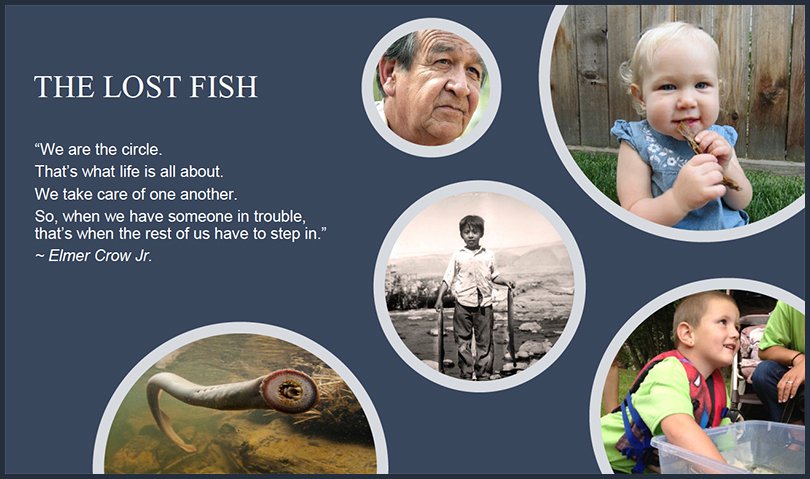Collaborative Efforts Bring Awareness of Pacific Lamprey Needs
- September 21, 2023
- Carol Winkel

Pacific lamprey are an ecologically important species and a key cultural species to the tribes in the Columbia Basin. In recent years, after a long trend of dwindling abundance, tribal, state, and federal fish and wildlife managers have seen a welcomed increase in their numbers counted at Bonneville Dam.
It is a positive sign for the members of the Pacific Lamprey Conservation Initiative, a collaborative project of Native American tribes, federal, state, municipal, local agencies, and non-profits to conserve Pacific lamprey for their traditional tribal use throughout their historical range in Alaska, California, Idaho, Oregon, and Washington.
At the Council’s September meeting, Ben Clemens, statewide lamprey coordinator for the Oregon Department of Fish and Wildlife; Kelly Coates, natural resources director of the Cow Creek Band of Umpqua Tribe of Indians; and Max Calloway, coordinator of the Pacific Lamprey Conservation Initiative gave an update on their work, which is funded through the Council’s fish and wildlife program.
As described on the project’s website, Pacific lamprey were often considered “junk fish” by non-tribal fisherman, and subjected to deliberate poisonings and removal. Through the tribes’ leadership and collaborative efforts to restore their populations and educate the public of their importance, Pacific lamprey are a tribal trust species for the U.S. Fish and Wildlife Service and a species of concern for many states.
Background
Pacific lamprey have inhabited the Pacific for millennia. Their historic runs in the Columbia River Basin numbered in the hundreds of thousands, but their distribution and abundance has decreased. They now return in drastically smaller numbers from the mouth of the Columbia River to Chief Joseph and Hells Canyon dams in the mainstem Columbia and Snake rivers.
Threats occur throughout their entire range, and include restricted mainstem and tributary passage; reduced flows and dewatering of streams; degraded water quality; and changing marine and climate conditions.
In 1994, the Council approved the first lamprey project, proposed by the Confederated Tribes of the Umatilla Indian Reservation, in the Program. Currently, there are five active projects that focus on Pacific lamprey funded through the Program in the mainstem of the Columbia and Snake rivers, the Willamette River, and in the mid-Columbia. These projects have a variety of goals and objectives, but their overall aim is to establish the status of the population and trends; document distribution; identify limiting factors; and develop reintroduction and supplementation actions.
On November 28, 2017 the Council approved for implementation the Pacific Lamprey Conservation Initiative (Project #2017-005-00). The overarching goal of the proposal is to support the effort among agencies and tribes to achieve long-term persistence of Pacific lamprey for traditional tribal cultural use over its U.S. range by funding on–the–ground implementation of restoration actions. The proposal helps fund high-priority lamprey restoration actions that are currently unfunded or partially funded in the Columbia River Basin, and works closely with the five other currently funded lamprey projects in the Program.



